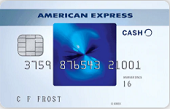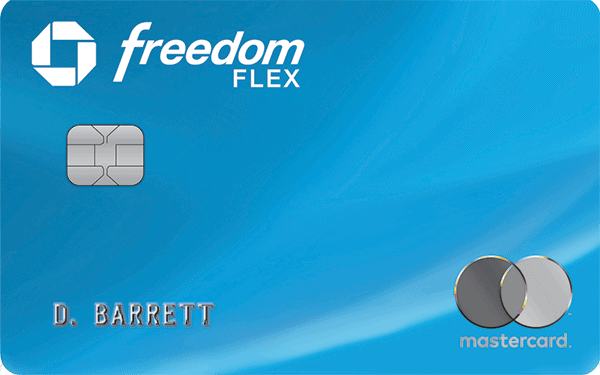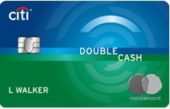Most people go to the supermarket once a week or more, so it’s easy to overspend if you’re not sticking to a strict budget. Fortunately, the best credit cards for groceries can help you get some of that money back.
When I sit down to create my budget every month, I plan $500 spending for groceries. That’s $6,000 a year.
To save money, I follow these three steps:
- Always make a grocery list
- Use rebate apps Ibotta and Fetch Rewards
- Pay with a cash back credit card
My credit card rewards strategy has evolved over time. Years ago, I wouldn’t have applied for a card with an annual fee to earn cash back on groceries or anything else. But I now have two credit cards with annual fees, including one that provides bonus cash back at U.S. supermarkets.
I recently sat down and crunched the numbers to compare the credit cards in my wallet when it comes to cash back at grocery stores.
In this article, I’ll use my $500 monthly grocery budget as an example to review the best credit cards for groceries. Here’s a sneak peek…
Potential Cash Back Based on $500/Month Grocery Bill
| Credit Card | Cash Back |
| Blue Cash Preferred® Card from American Express® | $360/year $265 after deducting annual fee (See Rates and Fees) |
| Blue Cash Everyday® Card from American Express | $180/year |
| Chase Freedom Flex | $120/year |
| Citi Double Cash | $120/year |
Keep in mind that this article focuses solely on grocery spending. The cards in my wallet offer benefits and rewards unrelated to groceries that you’ll want to consider. I’ve provided links below where you can learn more about these credit cards.
Let’s get started with the comparison…
Blue Cash Preferred Card from American Express

- 6% cash back at U.S. supermarkets for up to $6,000 per year in purchases, then it drops to 1%
- $95 annual fee after the first year
Without a doubt, Blue Cash Preferred Card from American Express is the #1 card for cash back at U.S. supermarkets. You earn 6% cash back on up to $6,000 per year in purchases, then 1%. Terms apply.
If you spend $500 a month at U.S. supermarkets using this card, you’ll earn $360 cash back in a year. This doesn’t take into consideration the $95 annual fee.
Other bonus categories include 6% cash back on select U.S. streaming services and 3% cash back at U.S. gas stations and on transit expenses. All other purchases earn 1% cash back. Terms apply.
The downside is the $95 annual fee that I mentioned, though a generous welcome bonus is offered.
Blue Cash Everyday Card from American Express

- 3% cash back at U.S. supermarkets for up to $6,000 per year in purchases, then it drops to 1%
- No annual fee
If you don’t want to pay an annual fee, there’s the Blue Cash Everyday Card from American Express. The bonus cash back is 3% at U.S. supermarkets for up to $6,000 per year in purchases, then 1%. Terms apply.
If you spend $500 a month at U.S. supermarkets using this card, you’ll earn $180 cash back for the year. That’s half of what you would earn with the Blue Cash Preferred Card from American Express.
The Blue Cash Everyday Card from American Express is the only card on this list that I don’t currently carry. I had it before I upgraded to the Blue Cash Preferred Card.
The Blue Cash Everyday Card also features a welcome bonus if a minimum spend requirement is met.
Chase Freedom Flex

- Earn 5% cash back on rotating categories, up to $1,500 spending per quarter
- Grocery stores are typically a 5% category one quarter per year
- 3% back on dining and drugstore purchases
- 5% back on travel when you buy through Chase Ultimate Rewards
- 1% cash back on all other purchases
- No annual fee
Chase Freedom Flex is the new version of Chase Freedom, which is one of the credit cards that I’ve had the longest. Its rewards structure is all about the rotating 5% cash back categories.
You must activate each quarter to earn 5% cash back on up to $1,500 in combined purchases for that quarter’s bonus categories. Some exclusions may apply to bonus categories.
I’ve included Chase Freedom Flex in this article because grocery stores are typically a featured bonus category for one quarter of the year. If you spend $500 per month for those three months, that’s $75 cash back.
When grocery stores aren’t earning bonus cash back, I would use another credit card because the standard rate is only 1%. You would only earn $45 cash back for the other nine months of the year on your $500 monthly grocery spending.
When you add the $75 bonus cash back and $45 standard cash back together, you get a total of $120 annual cash back for groceries. That’s a third of the $360 you would earn from the Blue Cash Preferred Card from American Express.
Although Chase Freedom Flex has rotating categories, the card consistently features 5% bonus cash back on things that matter to me. Aside from groceries, it’s common to find gas stations and department stores on the cash back calendar every year.
UPDATE: As of September 2020, Chase is offering 5% cash back at grocery stores (up to $12,000) during the first year that you have the Chase Freedom Flex card. My comparison was conducted before the change. This could significantly increase your first-year grocery rewards with this card.
Citi Double Cash

- Earn up to 2% cash back on all purchases: Get 1% when you buy and 1% when you pay it off
- No special bonus categories or earnings caps
- No annual fee
Citi Double Cash is a simple credit card that lets you earn up to 2% cash back on all purchases. Nothing more and nothing less.
Here’s how it works: You earn 1% cash back when you make a purchase and then an additional 1% cash back when you pay. If you’re like me and never carry a credit card balance, that’s an easy 2% cash back.
If you used this card for your $500 a month grocery spending, you would only earn $120 for the year. That’s a third of the $360 you would earn from the Blue Cash Preferred Card from American Express.
I only see myself using Citi Double Cash for groceries if I were to exceed the $6,000 limit for the 6% cash back with the Blue Cash Preferred Card from American Express.
Otherwise, I’ll continue to use this card for all of those expenses in life that have no opportunity for bonus cash back from other cards.
Final Thought
As you can see from this comparison, Blue Cash Preferred Card from American Express is the best credit card for groceries if you spend $500 per month, even when you factor in the $95 annual fee.
However, you have to take into consideration your monthly grocery spending habits and the opportunity for bonus cash back in other variable spending categories like transportation and shopping. Most of the cards in my wallet have those perks.
I should also mention that we’re only talking about a few hundred dollars of cash back per year for groceries, so you never want to carry a balance and pay interest. If you do, the interest charges will wipe out the rewards that you’ve earned and then some.
If you are in credit card debt, skip rewards credit cards altogether. You can still earn some cash back or gift cards on your supermarket spending by using my favorite free apps, Ibotta and Fetch Rewards. I’ve earned more than $3,000 cash back from using Ibotta alone.
Do you have a favorite credit card that you use to earn cash back at grocery stores? Add your review to the comments below!
More Credit Card Content:
- Best Credit Cards to Use With Ibotta and Fetch Rewards
- 3 Reasons Why I Pay My Credit Card Bills Every Week
- Best Rewards Credit Cards: Michael’s Top 5 Picks
- 3 Best Credit Cards With Free Cell Phone Protection


i enjoyed your article on “Ibotta” and “Fetch”. I came back to your site to retrieve your referral code for “Fetch” so you can get credit. I’ve been a member of “Ibotta” since June 2017. I must say however, your lifetime earnings are pretty impressive. I am gong to try and step up my game by tring out “Fetch”
Thanks for the wonderful advise.
Tara Cutts
Thanks! I’ve been doing better with Ibotta lately due to the mobile offers. Sometimes I’ll even use it to book a hotel.